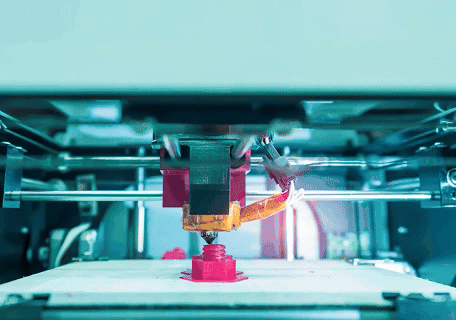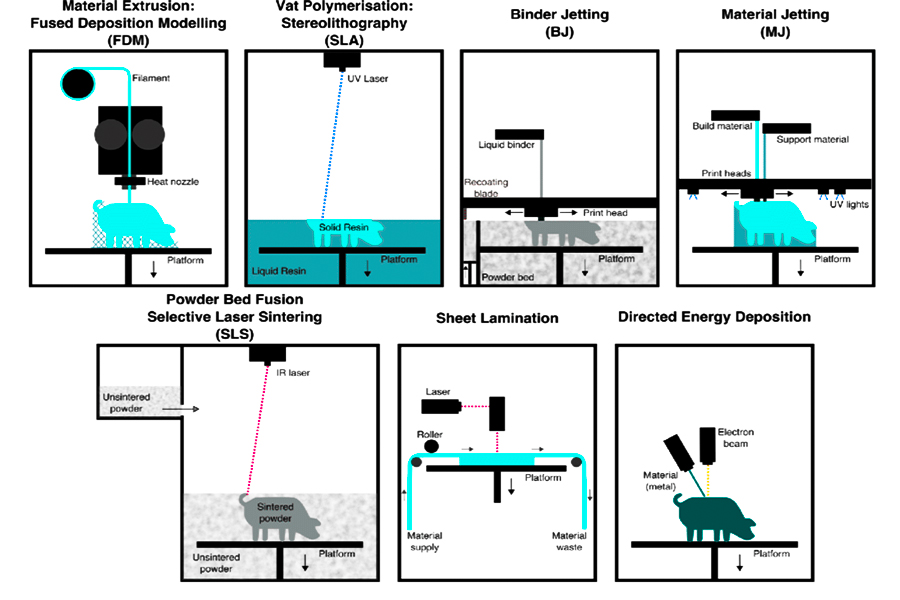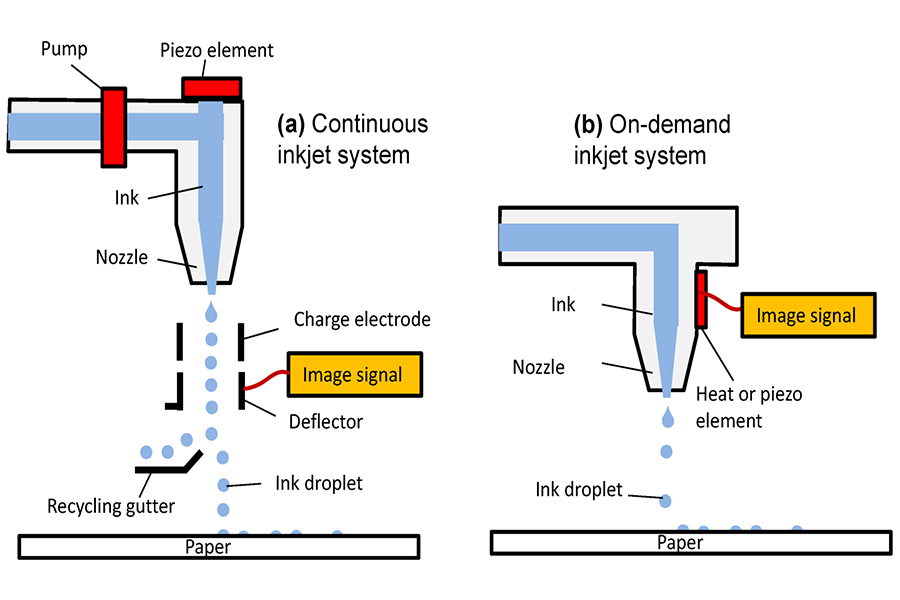La stampa 3D è una tecnica di produzione avanzata che converte i modelli digitali in oggetti solidi, sopravvivendoli a vicenda, noto anche come produzione additiva. 3 d stampa genera entità 3D direttamente da modelli di progettazione CAD o progetti di computer come i dati di scansione 3D, riducendo notevolmente i cicli di produzione e riducono i costi di ricerca e sviluppo. Le sue tecnologie di base includono la fotopolimerizzazione (SLA), la modellazione di deposizione fusa (FDM) e la sinterizzazione laser selettiva (SLS). Flessibile per materie plastiche, metalli, ceramiche e persino biomateriali, è ampiamente utilizzato in prototipi industriali, modelli medici, componenti aerospaziali e beni di consumo personalizzati.
JS Company è stata profondamente coinvolta nei servizi di stampa 3D per molti anni, fornendo soluzioni unico per i clienti. Che si tratti della domanda di stampa modello 3D di precisione o la produzione di complessi componenti funzionali strutturali, la società JS può ottenere una personalizzazione di alta qualità ed efficiente.
span class = frase " Data-translateID = "E17D5C8A04567A0768B6BCE0C40C8FCF" Data-Pos = "0" Data-Len = "100" Data-V-7B79C893 = "" crea modelli 3D mediante progettazione CAD o scansione 3D, quindi utilizza apparecchiature per modellare plastica, metalli e altri materiali strati per strato in oggetti solidi. NO a tradizionale Mormo e tradizionale href = "https://jsrpm.com/3d-printing"> produce rapidamente strutture geometriche complesse come griglie cave e superfici irregolari. 
Cos'è la stampa 3D?
modelli stampati 3D sono usati per stampare ossa dei pazienti o giunti in lega di titanio per un adattamento preciso. piccoli batch di componenti , come aerospace light scaffolds
span class = "frase" style = "font-size: 16px;" Data-translateID = "B0ACFAE65C5E7E78AC95EBE9A3803DAE" Data-Pos = "122" Data-Len = "246" Data-V-7B79C893 = "">
Come scegliere i materiali di stampa 3D?
; ;| Tipo tecnico | comunemente usato | caratteristiche | scenari di applicazione tipici |
| fdm | Pla, ABS, petg, nylon | a basso costo, comodo funzionamento e precisione moderata. | prototipizzazione rapida , componenti delle caratteristiche di base. |
| sla | resina fotosensibile (hard/flessibile) | la superficie era liscia e sfumata. | parti di precisione, modelli medici . |
| sls | nylon (pa12/pa6), tpu | resistenza ad alta temperatura, alta resistenza, nessun supporto. | componenti funzionali, costruzione leggera. |
| metallo stampa | acciaio inossidabile, lega di titanio, lega di alluminio | alta resistenza, resistente alla corrosione, conduttivo e conduttore di calore. | aerospace e stampi automobilistici . |
| Tipo di materiale | punti di forza | misure preventive |
| Pla | protezione ambientale, non tossico, economico. | scarsa resistenza alla temperatura (<60 ° C). |
| ABS | resistente agli shock, placcatura. | Durante il processo di stampa, c'è un odore e la piattaforma deve essere riscaldata. |
| nylon (pa) | auto-lubrificazione resistente all'usura. | Assorbimento di umidità, archiviazione a prova di umidità. |
| tpu | buona flessibilità, non facile da strappare. | La stampa deve rallentare. |
| resina fotosensibile | disponibile in opzioni ad alta risoluzione, trasparente/semi-trasparente. | a prova di uv quando memorizzato. |
| polvere di metallo | può essere prodotto con alta resistenza e struttura complessa. | post-trattamento è complesso (defat, sintering). |
Proprietà meccaniche
- Requisiti di forza: nylon e metal preferiti.
- resistenza alla temperatura: ABS (80-100 ° C) vs PA (120 ° C+).
Controllo dei costi
- Verifica rapida: PLA/FDM consigliato.
- Produzione di precisione: resina fotosensibile opzionale o SLS Nylon .
- Nessuna vernice: metallo/ceramica.
- personalizzazione del colore: filamento multicolore ABS/PLA.
Quali sono le differenze tra i diversi tipi di tecnologie di stampa 3D?
; ; Data-V-7B79C893 = ""> 1. > Confronto delle procedure core| Tipo tecnico | Principio di formazione | Tipo di materiale | Controllo di precisione | qualità superficiale |
| fdm | Il materiale di seta fuso a caldo è estruso a strati. | termoplastici (PLA/ABS). | dipende dall'accuratezza degli ugelli (± 0,1-0,5 mm). | grosso (richiede lucidatura). |
| sla | resina fotosensibile a cura del laser | resina fotosensibile. | alta precisione (± 0,05mm). | liscio ( vicino alla modanatura a iniezione ). |
| sls | sinterizzazione laser di nylon/metallo in polvere. | ingegneria plastica/metalli. | Accuratezza moderata (± 0,1-0,3 mm). | struttura porosa ( rivestimento richiesto ). |
| dimensione | fdm | sla | sls |
| Advantage | a basso costo, ampia gamma di materiali, dimensioni di stampa di grandi dimensioni . | alta risoluzione, alte prestazioni di dettaglio. | alta resistenza, nessuna struttura di supporto richiesta. |
| svantaggio | rugosità superficiale e precisione limitata. | le resine sono fragili e complesse da gestire. | equipaggiamento costoso ed elaborazione fastidiosa in polvere. |

Quali sono i principi di progettazione di base che il modello di stampa 3D deve seguire?
Span style = "Font-Family: 'Arial Black', 'Avant Garde'; Font-size: 16px;" Span Class; Data-translateID = "2BF8A3F7C4C8D4552D59C46B7F70679" Data-Pos = "0" Data-Len = "3" Data-V-7B79C893 = "" 1. > Principles di progettazione di pareti
- L'omogeneizzazione e minimizzazione: lo spessore della parete dei modelli di stampa 3D deve essere impostato al minimo in base alle proprietà del materiale (> 1 mm come raccomandato dall'ABS) per evitare la deformazione o la frattura a causa del sottile. La società JS supporta pareti sottili fino a 0,3 mm, resistenza e leggera bilanciata.
- Transizione gradiente: cambiamenti improvvisi nello spessore delle pareti possono facilmente portare a una concentrazione di stress, quindi le strutture del gradiente dovrebbero essere utilizzate nella progettazione. l'equipaggiamento SLA di JS
può gestire questi dettagli con precisione.
2. 3. > span Data-V-7b79c893 = "> 5. 1. 1.La elaborazione materiale
span class = "frase" style = "font-size: 16px;" Data-translateID = "957364B372832F132203E75EF358ED63" Data-Pos = "0" Data-Len = "110" DATA-V -7B79C893 = "" Modello ad alta precisione: spessore di strato fotocurati SLA fino a 0,025 mm e Fraomità della superficie fino a Medical-Grade Standards Span Data-V-7B79C893 = "> (ad esempio dati ortopedici di rughe della superficie ortopedica <0.8 μm).
span class = "frase" style = "fent-family: 'Arial black', 'avan Garde'; fisont-size: 16px;" Data-translateID = "830250AB80AA28B4152883AE19B657F1" Data-Pos = "0" Data-Len = "44" Data-V-7B79C893 = ""> THERMOPlastico Materiale: ABS/PLA Controllamento Onzing (± 1 ° C) Ottimizzazione, spessore a strati rilassati a 0,2 mm senza deformare.
3.Post processing efficiency improvement plan As an important branch of 3D printing, Ink jet printing has become a key technology in complex structure manufacturing, personalized customization and high performance parts production through precise control of micro-nozzles and multi-material compatibility. Its importance is reflected in the following: 1.High precision and meticulous performance 2.Integration of multiple materials and colors 3.Efficient production and rapid iteration 4.Physical diversity and innovation 5.Technical constraints and improvement directions Technology Strength Assessment 1.Advanced equipment 2.Material adaptability Service Capability Verification 1.Design support 3.Post processing support Quality control system 1.Accuracy verification 2.Reliability testing Cost transparency 1.Quotation details 2.economies of scale Priority should be given to service providers with more than 100,000 hours of printing per year (JS has a large-scale production line that reduces marginal costs). Cases and reputations 1.Industry case studies 2.Client reviews Viewing user feedback through industry forums or third-party platforms such as G2 focuses on on-time product delivery and aftermarket response (JS official website shows 98%% customer satisfaction). 1.Industrial-grade precision manufacturing: Equipped with SLA light curing equipment (±0.02mm accuracy), industrial FDM (±0.05mm), SLS nylon printing supports 100% density to 20% crystal lattice free adjustment with 40% weight loss and constant strength. 2.Comprehensive material compatibility: Includes engineering plastics (ABS/PLA), metals (titanium alloys), ceramics, biodegradable materials and conductive silver ink, supporting parameterized material selection (e.g. PEEK resistance to temperatures below 300°C). 3.Cost optimization and small batch customization: By combining 3D printing and injection molding processes, large-scale production costs can be reduced to 60% of traditional methods, especially for small orders of 100-1000 pieces. Water-soluble auxiliary materials can reduce reprocessing costs by 70% and delivery cycles by 30%. 4.Full Chain Digital Services: From CAD modeling to finished product inspection, 18 node data loops ensure 100% restoration of design intent. 5.Global Service Network: We provide 3D printing services to a number of countries worldwide. For small orders (≤100 pieces), delivery can be made as soon as 48 hours. For medical emergencies, we promise 24-hour fast delivery. The bilingual engineering team provides remote assistance such as model restoration and parameter optimization. 3D printing, at the heart of additive manufacturing, is reshaping global manufacturing landscape. It overcomes the limitation of traditional subtractive manufacturing processes, and enables numerous fields with its advantages of high precision, flexibility and low cost. From biocompatible implants to lightweight aerospace components, from personalized consumer electronics to complex industrial prototypes, 3D printing not only accelerates product iteration, but also facilitates frontier expansion in innovative design and functionality. In the future, 3D printing will continue to drive industrial upgrading as smart manufacturing and green manufacturing are deeply integrated. JS helps enterprises achieve personalized, efficient, low-carbon manufacturing and redefine global industry chain values through multi-material collaborative printing and hybrid manufacturing. The content of this page is for informational purposes only.JS SeriesNo representations or warranties of any kind, express or implied, are made as to the accuracy, completeness or validity of the information. It should not be inferred that the performance parameters, geometric tolerances, specific design features,material quality and type or workmanship that the third-party supplier or manufacturer will provide through the jusheng network. This is the responsibility of the buyerAsk for a quote for partsto determine the specific requirements for these parts.please Contact us Learn more information. JS is an industry-leading companyFocus on custom manufacturing solutions. With over 20 years of experience serving more than 5,000 customers,we focus on high precisionCNC machining,Sheet metal fabrication,3D printing,Injection molding,metal stamping,and other one-stop manufacturing services. 1.How can 3D printing reduce material waste? Traditional manufacturing often requires cutting and engraving, with a waste rate of 30% -50%. 3D printing is additive manufacturing, which involves printing only the parts needed, with a material utilization rate of over 90%. It is particularly suitable for small or complex production. 2.What is the best FDM printing layer thickness setting? The prototype is rough, with layers of 200-300 microns (0.2-0.3 mm) thick, fast but rough on the surface. The model is excellent, with layers 50-100 microns (0.05-0.1 mm) thick, better detail and longer processing time. 3.Are SLS-printed powder materials reusable? SLS-printed powder material can be reused, but after repeated use, its flowability decreases and their strength decreases slightly. The recovery rate of metal powder can be over 90%, and the number of uses needs to be controlled according to the material type to ensure performance. 4.Is 3D printing expensive? Small plastic printers for home use range from $280 to $1,400, and are suitable for DIY and small batch production. Mass production relies on industrial-grade metal/high-performance printers, requiring tens of thousands to millions.
Come bilanciare l'efficienza e l'accuratezza tra lo spessore dello strato e la velocità di stampa?
What is the importance of ink jet printing in 3D printing?

How to evaluate the professionalism of a 3D printing shop?
Five reasons to choose JS company's 3D printing services
Summary
Disclaimer
JS Team
Our factory is equipped with more than 100 state-of-the-art 5-axis machining centers and is ISO 9001:2015 certified. We provide fast, efficient and high-quality manufacturing solutions to customers in more than 150 countries around the world. Whether it's low-volume production or mass customization, we can meet your needs with the fastest delivery within 24 hours. chooseJS TechnologyIt means choosing efficiency, quality and professionalism.
To learn more, please visit our website:jsrpm.comFAQs
Resources






